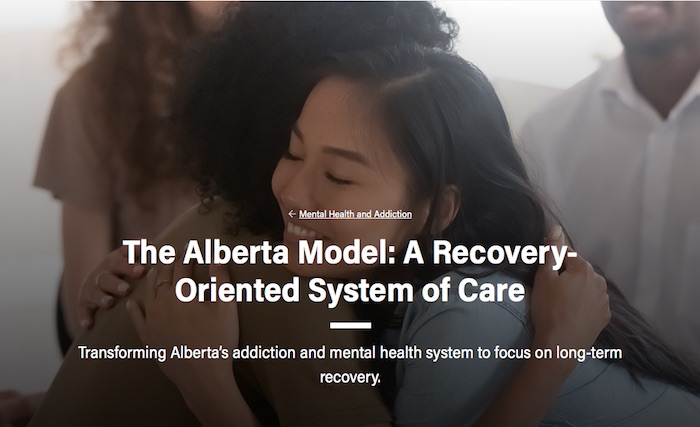Alberta
Province commits $4 million for overdose response teams and 35 detox and pre-treatment beds in Calgary

Expanding access to detox and recovery in Calgary
Alberta’s government is investing in detox, recovery and dynamic overdose response services at the Drop-In Centre in Calgary.
Every Albertan struggling with addiction deserves the opportunity to pursue recovery. As part of building a recovery-oriented system of care, Alberta’s government is providing more than $4 million to the Calgary Drop-In Centre to create dynamic overdose response teams and establish 35 medical detox and pre-treatment beds, capable of supporting up to 1,000 Calgarians every year.
This partnership stems from the efforts led by the Calgary Public Safety and Community Response Task Force to improve public safety while treating addiction and mental health as healthcare issues.
“We’re continuing to treat mental health and addiction as health-care issues by building recovery-oriented systems of care to ensure every Albertan has the opportunity to pursue recovery. Whether it’s rapidly responding to an overdose, accessing medical detox or pre-treatment, the impact of this funding will be life-saving and life-changing for so many Albertans.”
“Our government’s focus on addiction recovery and supports for those facing homelessness is bringing positive change for Calgary. The Calgary Drop-In Centre does incredible work to provide services for many individuals facing homelessness. With more access to addiction recovery treatment, more Albertans will be able to get the help they need to overcome their challenges.”
With this funding, the Calgary Drop-In Centre will significantly increase its treatment capacity. This includes:
- 15 medical detox beds and 20 pre-treatment beds: Albertans struggling with addiction will be supported to safely withdraw from drugs or alcohol under medical supervision. They will also be provided with pre-treatment support to prevent relapse and better understand treatment options as they continue their pursuit of recovery.
- Dynamic overdose response teams: To keep communities safe while treating addiction as a health-care issue, the Calgary Drop-In Centre will work in conjunction with local paramedics, first responders and community organizations to respond to overdoses both at the Drop-In Centre as well as in the community.
“People struggling with mental health and addiction deserve compassion and support, and at the Drop-In Centre they receive both. We’re pleased to work with Alberta’s government to deliver critical services to those in need and help more vulnerable people in our communities pursue recovery from addiction.”
These additional medical detox and pre-treatment beds, capable of supporting up to 1,000 Calgarians every year, will be life-saving and life-changing for countless people in the years to come. All publicly funded detox, treatment and recovery spaces are free for Albertans, with no user fees.
Alberta’s government is continuing to build a recovery-oriented system of care, where everyone struggling with addiction and mental health challenges is supported in their pursuit of recovery. This includes initiatives like eliminating fees for residential addiction treatment, launching the Digital Overdose Response System (DORS) app and expanding access to opioid agonist treatment.
In December 2022, Alberta’s government established two new cabinet task forces to bring community partners together to address the issues of addiction, homelessness and public safety in Calgary and Edmonton. The two Public Safety and Community Response Task Forces are responsible for implementing $187 million in provincial funding to further build out a recovery-oriented system of addiction and mental health care. The initiatives being implemented are part of a fair, firm and compassionate approach to keeping communities safe while treating addiction and mental health as health-care issues.
Quick facts
- Alberta’s government is providing $3.8 million per year, with $1.6 million for dynamic overdose response services and nearly $2.2 million to offer 15 detox and 20 pre-treatment beds, capable of supporting up to 1,000 Calgarians annually. There was also a one-time investment of about $450,000 for capital improvements.
- Clients with opioid addiction will also be able to immediately start on evidence-based opioid treatment medications like suboxone and sublocade through Alberta’s Virtual Opioid Dependency Program.
- Alberta spends more than $1 billion annually on addiction and mental health care and supports, including prevention, intervention, treatment and recovery.
- Any Albertan struggling with addiction can contact 211 Alberta to connect with local services and virtual supports. 211 is free, confidential and available 24-7.
- The Virtual Opioid Dependency Program provides same-day access to addiction medicine physicians and life-saving medications to Albertans across the province. Albertans can call 1-844-383-7688 seven days a week, from 8 a.m. to 8 p.m. daily.
Alberta
Alberta Provincial Police – New chief of Independent Agency Police Service

Sat Parhar has been appointed as the first chief of the Independent Agency Police Service, marking the next step toward a new municipal policing option.
The appointment of a new chief for the Independent Agency Police Service (IAPS) marks the next step in giving municipalities a new option for local policing and builds on the work already underway for the agency to assume the police-like duties currently carried out by the Alberta Sheriffs. The IAPS will empower municipalities to adopt strategies that effectively respond to their specific safety concerns, enhancing public safety across the province.
Chief Parhar brings more than 25 years of policing experience, including senior roles with the Calgary Police Service, most recently as deputy chief. His frontline policing experience and deep understanding of Alberta’s complex and diverse public safety landscape positions him to lead the agency as it takes shape and begins its work as a new municipal policing option, keeping communities safe.
Once operational, the agency will strengthen Alberta’s existing policing model and complement the province’s current police services, which includes the RCMP, Indigenous policing services and municipal police. It will help fill gaps and ensure law enforcement resources are deployed efficiently to meet Alberta’s evolving public safety needs and improve law enforcement response times, particularly in rural communities.
“Appointing Chief Sat Parhar is a key milestone in Alberta’s plan to give municipalities a real choice in how their communities are kept safe. This is about building a modern police service that reflects the priorities of Albertans, strengthens local decision-making, and ensures every corner of our province, especially rural areas, can count on responsive, effective law enforcement. With his decades of experience and deep understanding of Alberta’s policing landscape, he is the right leader to bring this vision to life.”
“This appointment signifies a significant step forward in our efforts to establish a more robust, community-focused policing model that is better equipped to meet the unique needs of our local residents. Under Chief Parhar’s visionary leadership, we are confident that we will develop a modern, efficient police service that not only enhances public safety but also aligns closely with the priorities and values of Albertans. His experience and commitment are vital in shaping an IAPS that is responsive, transparent, and dedicated to fostering trust and collaboration within the community, ultimately ensuring a safer and more connected society for all.”
Chief Parhar’s immediate priorities will be to hire an executive team and commence organizational planning such as developing key recruitment, training and other operational policies. Chief Parhar’s appointment is the first step of many to establishing the IAPS.
“It’s an honour to take on this role and help shape a modern police service built for Alberta. My focus from day one will be on setting high standards for professionalism, building strong relationships with our partners and ensuring this service reflects the needs and priorities of the communities we serve.”
The Independent Agency Police Service was formally created through regulation following the passing of Public Safety Statutes Amendment Act, 2024. The agency will operate as an independent Crown corporation, and will be renamed the Alberta Sheriffs Police Service, with its head office located in Calgary. The IAPS will be operationally independent from the provincial government with civilian oversight, consistent with all police services in Alberta.
“When it comes to policing, municipalities like ours deserve a choice – especially when the current system leaves us disadvantaged simply because of our size. We look forward to learning more about what that alternative will look like once an Alberta police agency is fully established and the options are clear. For us, this is about fairness, sustainability, and ensuring municipalities have access to policing solutions that reflect both their needs and their realities.”
Quick facts
- The regulation establishes the IAPS Provincial Corporation and its governance structure including board of directors, board of director powers, financial responsibilities and accountabilities.
Related news
- Expanding municipal police service options (April 7, 2024)
Alberta
Pierre Poilievre – Per Capita, Hardisty, Alberta Is the Most Important Little Town In Canada

From Pierre Poilievre
-

 Business1 day ago
Business1 day agoRFK Jr. says Hep B vaccine is linked to 1,135% higher autism rate
-

 Crime2 days ago
Crime2 days agoNational Health Care Fraud Takedown Results in 324 Defendants Charged in Connection with Over $14.6 Billion in Alleged Fraud
-

 Business14 hours ago
Business14 hours agoWhy it’s time to repeal the oil tanker ban on B.C.’s north coast
-

 Censorship Industrial Complex1 day ago
Censorship Industrial Complex1 day agoGlobal media alliance colluded with foreign nations to crush free speech in America: House report
-

 Alberta9 hours ago
Alberta9 hours agoAlberta Provincial Police – New chief of Independent Agency Police Service
-

 Health2 days ago
Health2 days agoRFK Jr. Unloads Disturbing Vaccine Secrets on Tucker—And Surprises Everyone on Trump
-

 Alberta14 hours ago
Alberta14 hours agoPierre Poilievre – Per Capita, Hardisty, Alberta Is the Most Important Little Town In Canada
-

 Business1 day ago
Business1 day agoElon Musk slams Trump’s ‘Big Beautiful Bill,’ calls for new political party

